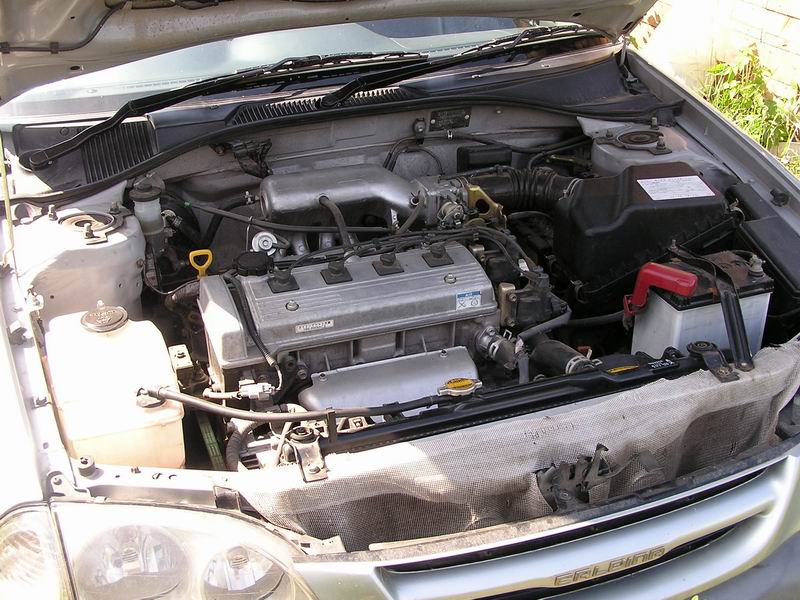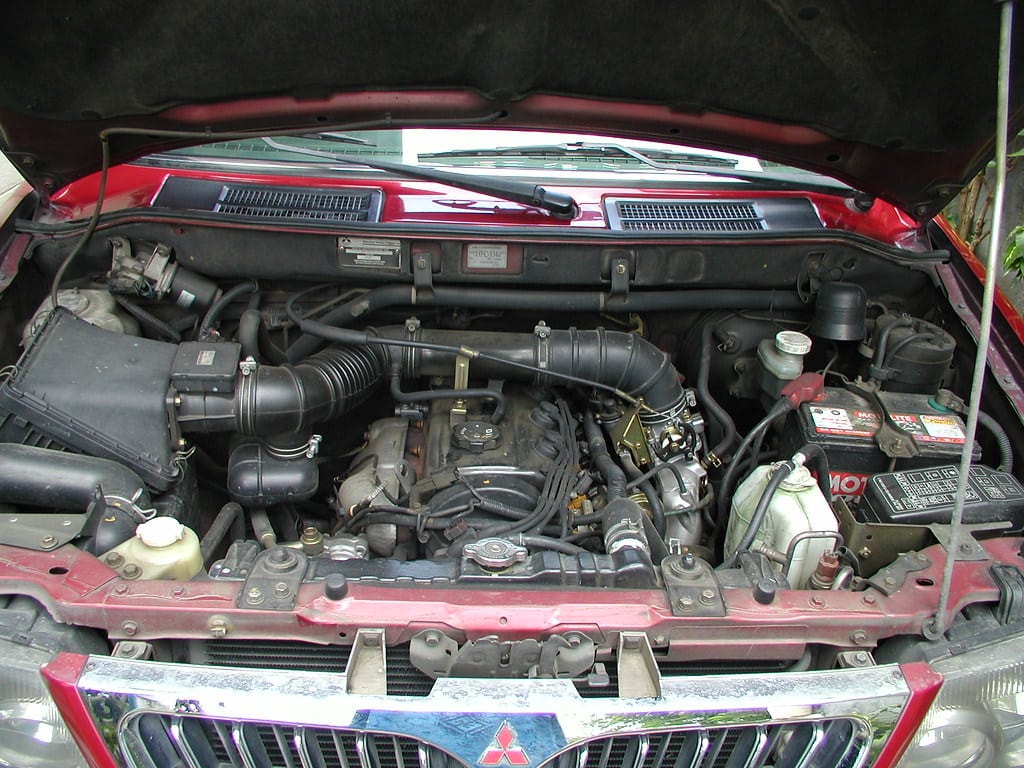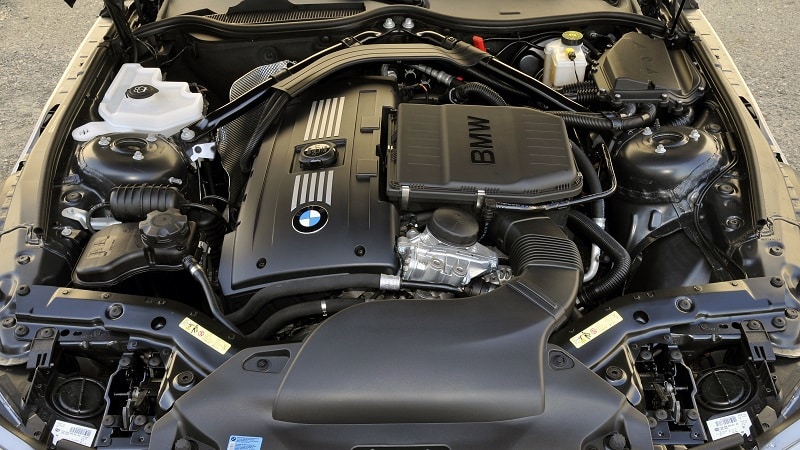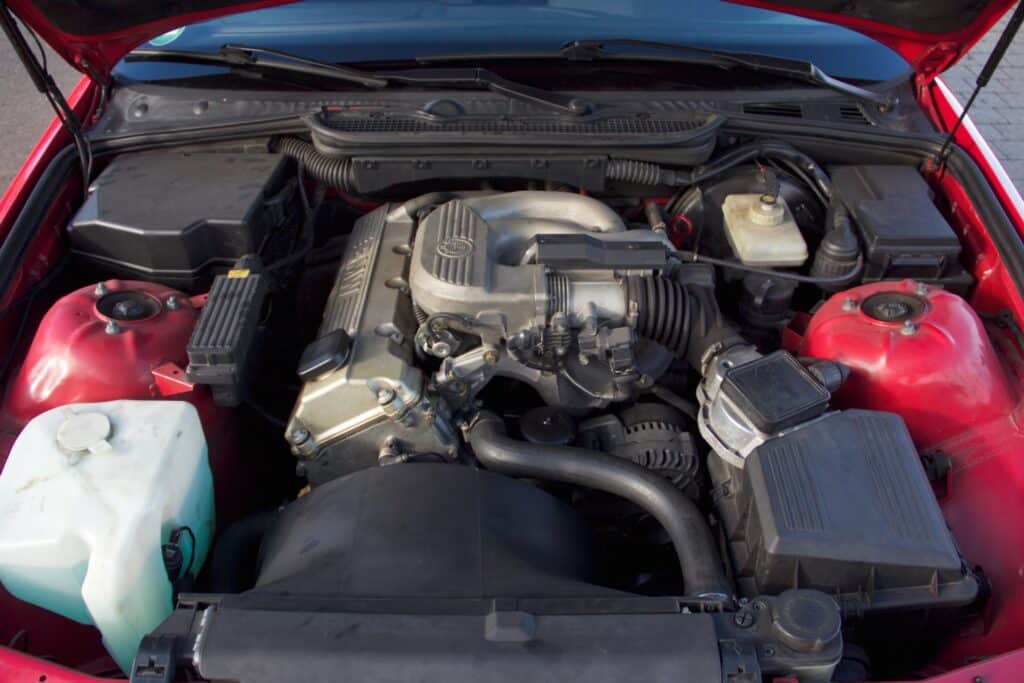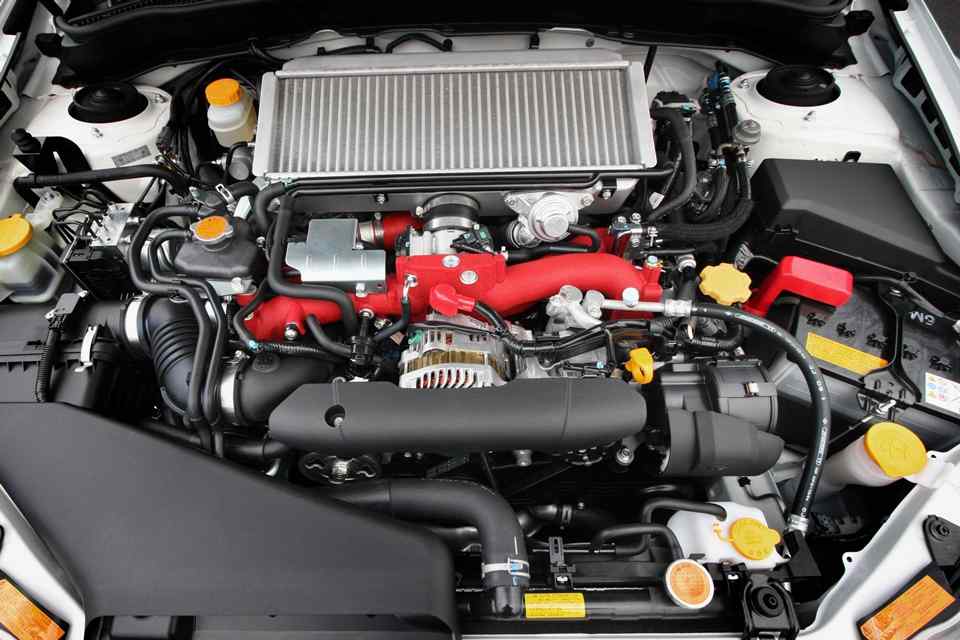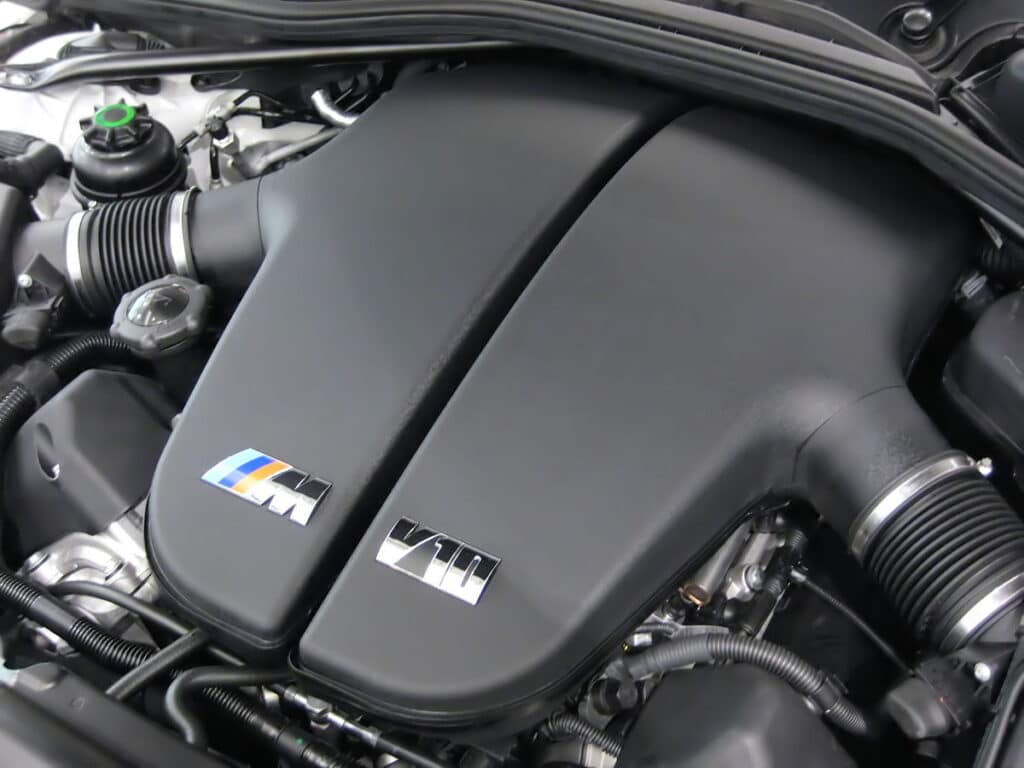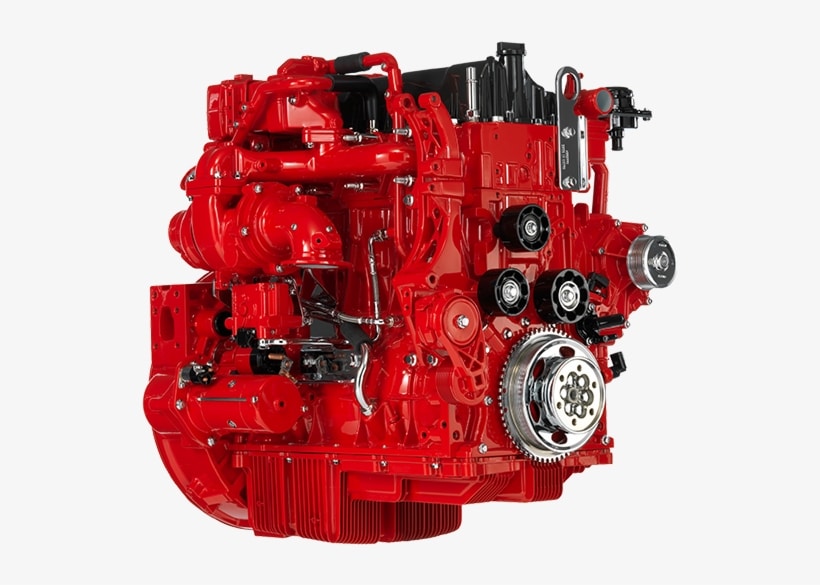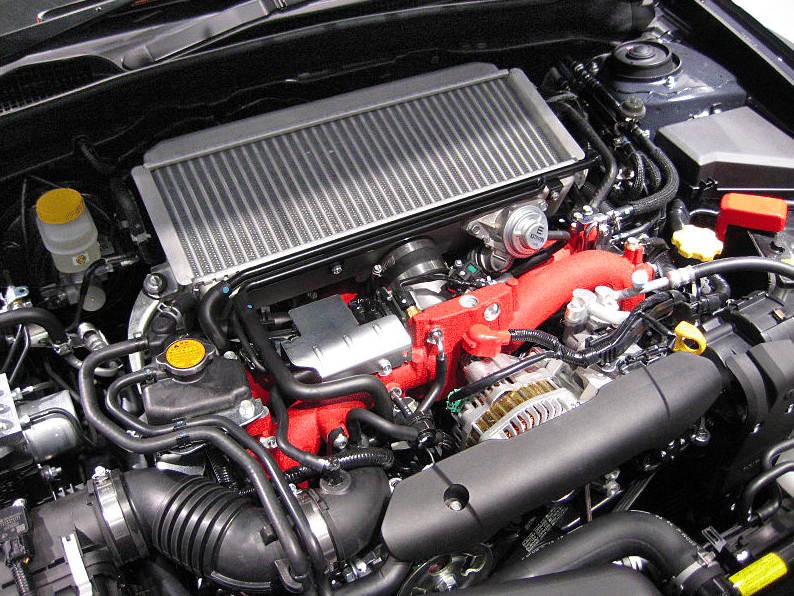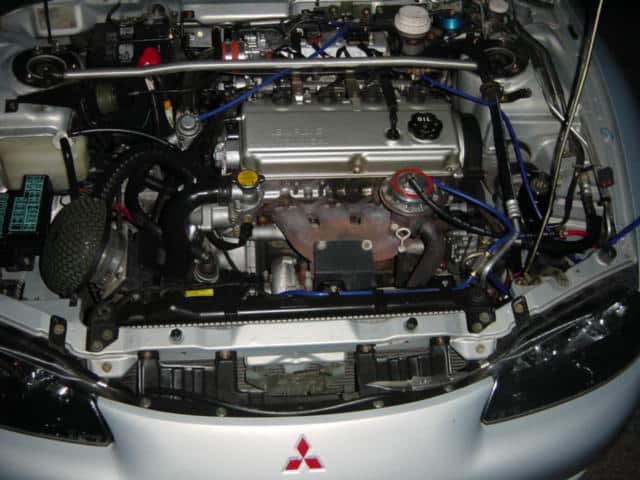The Hyundai G4GC engine is a workhorse that has powered numerous Hyundai and Kia vehicles over the years. Known for its reliability and versatility, the G4GC is a 2.0-liter, four-cylinder engine that belongs to the Beta II engine family. Its DOHC (Dual Overhead Camshaft) configuration is widely recognized, contributing to its smooth operation and respectable efficiency.
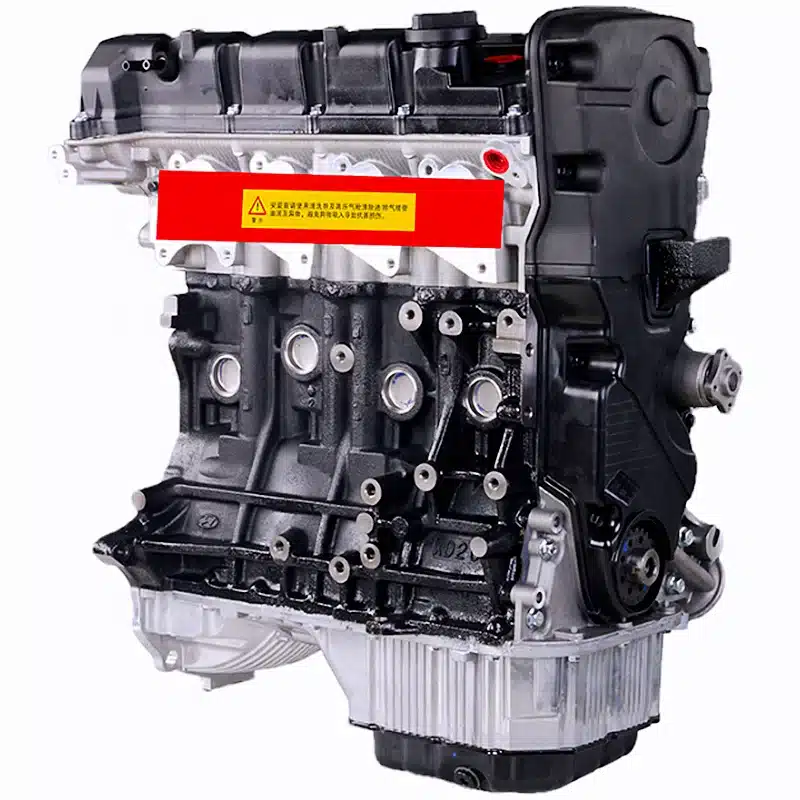
This engine has been utilized in various models, ranging from the energetic Hyundai Elantra to the versatile Tucson, showcasing its adaptability across different vehicle segments. With its aluminum cylinder block and cast iron crankshaft, the G4GC balances lightweight design and durability, making it a preferred choice for drivers seeking a dependable powerplant.
Comprehending the intricacies of the G4GC engine holds paramount importance for both owners and enthusiasts alike. Acquiring knowledge about your engine’s capabilities, limitations, and maintenance prerequisites is the key to sustaining peak performance and preventing avoidable issues.
Key Specs at a Glance:
- Displacement: 2.0 liters
- Configuration: 4-cylinder, DOHC
- Power Output: Ranges from 136 to 143 horsepower
- Torque: Approximately 186 Nm (137 lb-ft)
- Bore x Stroke: 82 mm x 93.5 mm
- Compression Ratio: 10.1
- Recommended Oil: 5W-30 or 10W-30 (depending on climate)
- Fuel System: Multi-Point Fuel Injection
- Timing Mechanism: Timing belt
- Engine Type: Interference
- Fuel Efficiency: Varied by model and driving conditions
Furthermore, well-informed owners are better equipped to make judicious choices concerning upgrades, oil changes, and other enhancements, ensuring the enduring reliability of their vehicles.
Being well-acquainted with the engine’s design and operational intricacies empowers you to spot common signs of wear and efficiently troubleshoot potential problems before they snowball into expensive repairs.
Hyundai G4GC Engine Specs
The Hyundai G4GC engine is a testament to Hyundai’s engineering prowess. As part of the Beta II series, it features a four-cylinder, double overhead camshaft (DOHC) design that allows for better airflow and a higher rev ceiling compared to SOHC engines.
| Specification | Detail |
|---|---|
| Displacement | 2.0 Liters (1975 cc) |
| Configuration | Inline-4, DOHC, 16-valve |
| Bore x Stroke | 82 mm x 93.5 mm |
| Compression Ratio | 10.1:1 |
| Power Output | 136-143 HP @ 6000 rpm |
| Torque | 186 Nm (137 lb-ft) @ 4500 rpm |
| Engine Block Material | Aluminum |
| Cylinder Head Material | Aluminum |
| Valvetrain | CVVT (Intake), 4 valves per cylinder |
| Fuel Delivery System | Multi-Point Fuel Injection |
| Recommended Oil | 5W-30, 10W-30 |
| Timing Mechanism | Timing Belt |
| Engine Type | Interference |
| Fuel Efficiency | Varied by model and driving conditions |
| Dimensions (LxWxH) | Specific to vehicle installation |
| Weight | Specific to vehicle installation |
This design enhances both the efficiency and power delivery of the engine. It utilizes a cast aluminum engine block and cylinder head, which help to reduce the overall weight while still maintaining strength and thermal efficiency.
The G4GC incorporates a Continuously Variable Valve Timing (CVVT) system on the intake camshaft, which optimizes valve timing for a balance of performance, emissions, and fuel economy. The engine’s electronic multipoint fuel injection system further refines fuel delivery, ensuring precise fuel mixture for optimal combustion.
The engine’s displacement is a significant factor in its performance capabilities. The G4GC has a displacement of 2.0 liters, which is achieved through a bore of 82 mm and a stroke of 93.5 mm. This displacement, combined with a compression ratio of 10.1:1, allows the G4GC to produce a power output that ranges between 136 to 143 horsepower, depending on the specific vehicle model and configuration.
Torque is the force that gets the vehicle moving, and the G4GC engine delivers it efficiently. At around 186 Nm (137 lb-ft) of torque, the engine offers a responsive driving experience, particularly at mid-range revs where the engine’s power is most accessible. This characteristic torque output ensures that the vehicle has sufficient pull and acceleration, especially when overtaking or merging onto highways.
The G4GC engine is designed to be compact and lightweight, making it suitable for various vehicle sizes. Using aluminum in the engine block and cylinder head contributes to its modest weight, improving vehicle balance and handling. Despite its smaller size, the engine does not compromise on robustness or power delivery.
What Cars Have A G4GC Engine?
- Kia Cerato
- Kia Sportage
- Hyundai Elantra
- Kia Ceed
- Kia Spectra
- Hyundai Tucson
- Hyundai Sonata EF
- Hyundai i30
- Hyundai Coupe
- Hyundai Trajet
- Kia Carens
The Beta series engine is replaced by new and more powerful engines from the Theta series. G4GC is not an exception, and it was replaced by 2.0 Liter G4KD in 2005.
Engine Reliability and Performance
The Hyundai G4GC engine is renowned for its longevity and durability. Its construction with a cast aluminum block and iron crankshaft gives it a sturdy foundation that is resistant to wear and tear. Many G4GC engines have been known to exceed 200,000 miles with proper maintenance.
Here are some bullet points highlighting the durability features of the G4GC engine:
- Robust Build: Aluminum block with iron crankshaft for enhanced durability.
- CVVT Technology: Reduces engine stress by optimizing valve timing.
- Electronically Controlled Fuel Injection: Ensures consistent engine performance and longevity.
- Maintenance-Friendly Design: Engine components are designed for accessibility, simplifying repairs and maintenance.
Performance metrics for the G4GC engine are quite respectable, especially considering its role in powering compact and mid-size vehicles. The engine provides a good balance between efficiency and the power needed for daily driving.
Here are some key performance metrics:
- Horsepower: Averages 136 to 143 HP, providing sufficient power for various driving conditions.
- Torque: At about 186 Nm (137 lb-ft), it offers a steady power curve that’s useful in city driving and highway passing maneuvers.
- Fuel Economy: Varies by model but generally offers competitive miles per gallon (MPG) within its class.
Common Modifications and Upgrades
While the G4GC engine is strong in its stock form, many enthusiasts choose to modify and upgrade their engines for improved performance. Here are common modifications that can be made:
- Cold Air Intake System: Improves airflow to the engine for better throttle response and a slight increase in horsepower.
- Exhaust System Upgrades: A freer-flowing exhaust system can reduce backpressure, potentially increasing power and producing a more aggressive sound.
- ECU Tuning: Adjusting the engine control unit (ECU) can optimize fuel and air delivery for performance gains.
- Turbocharging: While not a simple modification, adding a turbocharger can significantly increase power output.
It’s important to note that modifications can affect engine reliability and should be undertaken by experienced professionals. They can also have implications for warranty and insurance, so owners should consider these factors carefully.
Engine Problems and Troubleshooting
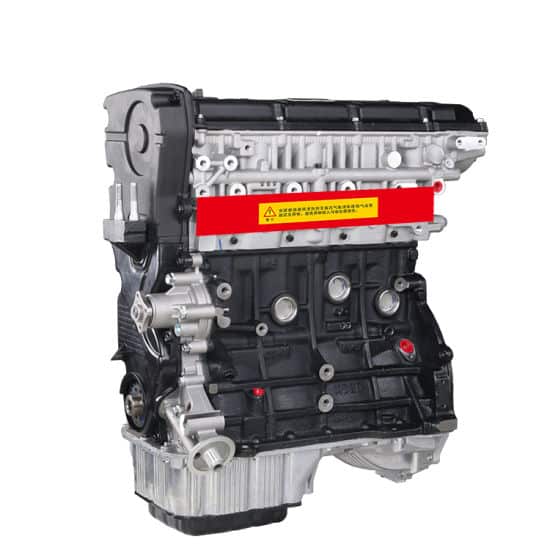
Despite its reliability, the Hyundai G4GC engine is not without its issues. Over time, several common problems have been identified by mechanics and owners alike. Here are some of the issues you might encounter:
- Timing Belt Failures: The G4GC uses a timing belt that requires regular replacement. If neglected, a failed belt can lead to severe engine damage, particularly since this is an interference engine.
- Oil Leaks: Aging seals and gaskets can lead to oil leaks, commonly seen around the valve cover and oil pan.
- Crankshaft and Camshaft Sensor Failures: Sensor malfunctions can cause rough running, stalling, and difficulty starting the engine.
- Idle Irregularities: Dirty idle air control valves or throttle bodies can lead to erratic idling.
- Misfires: Worn ignition components, like spark plugs and wires, can cause engine misfires, reducing efficiency and power.
Diagnostic Tips for Engine Problems:
When diagnosing issues with the G4GC engine, a systematic approach is best. Use these tips to pinpoint the problem:
- Check Engine Light: Always start by reading the diagnostic trouble codes (DTCs) with an OBD-II scanner if the check engine light is on.
- Visual Inspection: Look for signs of oil leaks, worn belts, and damaged components.
- Listen to the engine sounds; knocking or ticking noises can indicate low oil pressure or valve train issues.
- Idle and Rev Test: Monitor how the engine idles and responds to acceleration. Irregularities can signal sensor or air intake issues.
- Ignition System Check: Inspect spark plugs, wires, and coil packs for wear or damage if misfires are present.
Preventative Maintenance Strategies
Preventative maintenance is the key to extending the life of a G4GC engine and avoiding many common issues. Here’s a maintenance checklist:
- Regular Oil Changes: Use high-quality oil and replace it according to Hyundai’s recommendations to prevent sludge buildup and excessive wear.
- Timing Belt Replacement: Change the timing belt at the interval specified by Hyundai to prevent catastrophic engine damage.
- Cooling System Maintenance: Keep the coolant fresh and the cooling system in good working order to prevent overheating.
- Ignition System Upkeep: Replace spark plugs and inspect ignition components regularly.
- Regular Checks on Sensors: Monitor the health of crucial sensors, particularly the crankshaft and camshaft sensors, to catch failures early.
- Air Intake Cleaning: Clean the idle air control valve and throttle body periodically to maintain smooth idling and throttle response.
By being proactive with maintenance and addressing issues as soon as symptoms arise, you can often prevent small problems from becoming big, expensive ones. Regular check-ups by a qualified mechanic can help keep your G4GC engine running smoothly for years to come.
Oil Specifications for the G4GC Engine
For the Hyundai G4GC engine, the manufacturer typically recommends using API-certified, high-quality motor oil to ensure optimal performance and protection. Depending on the climate and operating conditions, the preferred viscosity is 5W-30 or 10W-30.
In colder climates, 5W-30 is favored as it provides better flow at lower temperatures. In warmer climates, 10W-30 can be used for its higher temperature stability.
Oil Capacity and Change Intervals
The G4GC engine has an oil capacity of approximately 4.2 liters (4.4 quarts) with a new oil filter installed. It is crucial to adhere to Hyundai’s recommended oil change intervals to maintain engine health.
Typically, oil changes should be performed every 3,000 to 5,000 miles if using conventional oil or every 7,500 to 10,000 miles with synthetic oil. However, always refer to the vehicle’s owner’s manual for the most accurate maintenance schedule.
Effects of Oil Choice on Engine Longevity
The choice of oil can significantly impact the longevity of the G4GC engine. Here’s how:
- Viscosity Match: Using the correct viscosity aids in creating an optimal lubrication layer, reducing wear on moving parts.
- Quality: High-quality oil can better protect against sludge and varnish, keeping the engine cleaner and operating efficiently.
- Synthetic vs. Conventional: Synthetic oils generally provide better protection, especially under extreme conditions, and can extend the time between oil changes.
- Additives: Modern oils contain additives that can protect against corrosion, improve sealing, and enhance the oil’s overall protective qualities.
Consistently using the right type of oil and changing it at the correct intervals is perhaps the single most important aspect of engine maintenance. It’s a relatively simple part of routine upkeep that plays a significant role in prolonging the life of your G4GC engine, ensuring it remains reliable mile after mile.
Fuel Efficiency and Consumption
The Hyundai G4GC engine is known for its decent fuel efficiency, especially within compact and midsize vehicle segments. On average, vehicles equipped with the G4GC engine achieve fuel consumption rates that can range from 23 miles per gallon (mpg) in city driving to 30 mpg or more on the highway, though these figures can vary based on driving conditions, maintenance, vehicle load, and other factors.
Tips for Optimizing Fuel Economy
To maximize the fuel efficiency of your G4GC engine, consider the following tips:
- Regular Maintenance: Stick to a regular maintenance schedule, including timely oil changes, air filter replacements, and spark plug inspections.
- Tire Pressure: Keep tires inflated to the recommended pressure to reduce rolling resistance.
- Weight Reduction: Remove unnecessary weight from the vehicle to decrease fuel consumption.
- Use of Recommended Fuel: Fill up with the grade of fuel recommended by Hyundai, as higher octane fuels do not necessarily improve economy in engines not designed for them.
- Aerodynamics: Install aerodynamic accessories such as a rear spoiler or lower the vehicle to reduce drag if applicable.
Driving habits significantly influence fuel consumption in any vehicle, including those powered by the G4GC engine:
- Gentle Acceleration: Accelerate smoothly and gradually to avoid unnecessary fuel burn.
- Speed Regulation: Maintain a constant speed and use cruise control where possible to keep fuel use steady.
- Idle Time: Minimize idling as it consumes fuel without covering any distance.
- Gear Shifting: For manual transmissions, shift up early to keep engine RPMs lower.
- Plan Routes: Optimize your routes to avoid heavy traffic and reduce stop-and-go driving.
Ignition System Overview
The firing order of an engine is the specific sequence in which the spark plugs fire, igniting the fuel-air mixture in each cylinder. For the Hyundai G4GC engine, the firing order is 1-3-4-2. This sequence is strategically designed to balance the engine’s power delivery and minimize vibration, promoting smooth operation and longevity.
Choosing the right spark plugs and setting the correct gap is essential for optimal engine performance and efficiency:
- Selection: The G4GC engine requires spark plugs that meet OEM specifications for heat range and electrode material. Iridium or platinum-tipped plugs are recommended for their durability and performance.
- Gap Settings: The spark plug gap for the G4GC engine typically should be set between 0.039 and 0.043 inches (0.9 – 1.1 mm). An accurately set gap ensures that the spark has the proper strength for effective combustion.
Maintenance Tips for the Ignition System
Maintaining the ignition system is vital for the health of your G4GC engine. Here are some maintenance tips:
- Regular Inspection: Regularly check spark plugs and ignition wires for wear or damage. Look for oil or carbon buildup signs that can indicate other engine issues.
- Timely Replacement: Follow Hyundai’s recommended intervals for replacing spark plugs and ignition wires. Even if they don’t show signs of wear, their ability to conduct a strong spark degrades over time.
- Clean Connections: Ensure that the spark plug connections are clean and corrosion-free for a strong electrical connection.
- Use Proper Tools: When replacing spark plugs, use a torque wrench to avoid over-tightening, which can damage the threads, or under-tightening, which can cause poor performance.
To ensure that your G4GC engine starts reliably and runs efficiently, following these guidelines for maintaining the ignition system is important. Consistent maintenance contributes to optimal engine performance and helps achieve consistent fuel economy and reduce emissions.
Engine Power and Horsepower Ratings
The Hyundai G4GC engine is known for its flat torque curve, providing consistent power delivery across various engine speeds. This engine typically offers a horsepower rating ranging from 136 to 143 HP, reaching its peak at around 6000 RPM. The torque is measured at about 186 Nm (137 lb-ft), with its maximum available from a lower RPM, making it particularly responsive during acceleration and climbing grades.
This responsiveness results from meticulous engineering, ensuring the engine provides ample power in everyday driving without the need for high-revving stress.
Compared to other engines in its class, the G4GC holds its own, especially regarding reliability and the balance between power output and fuel economy. It may not be the most powerful engine on the market, but it offers a compelling combination of efficiency and durability.
Its performance is competitive within the compact and midsize segments, providing enough power for comfortable highway cruising and confident city driving.
Upgrading for Enhanced Horsepower
For those looking to boost the horsepower of their G4GC engine, several upgrades can be considered:
- Intake and Exhaust: Replacing the stock intake and exhaust with high-performance aftermarket parts can improve airflow, slightly increasing horsepower.
- Engine Tuning: A professional ECU remap can optimize the fuel and ignition parameters for better performance.
- Forced Induction: Adding a turbocharger or supercharger is a more involved upgrade but can significantly increase horsepower. It should be done cautiously and by professionals, as it may require additional engine strengthening.
- Camshafts: Upgrading to performance camshafts can increase valve lift and duration, leading to better engine breathing and more power.
Any modification should be undertaken considering the engine’s limitations and the impact on overall reliability. Additionally, these changes may require supporting modifications and should always be complemented with a proper tune to ensure the engine runs safely and efficiently.
Timing System: Belt or Chain?
The Hyundai G4GC engine utilizes a timing belt. Timing belts and chains serve the same critical function—synchronizing the rotation of the crankshaft and camshaft—but they differ in maintenance requirements and longevity. Belts are generally quieter and less expensive to produce but require more frequent replacement than chains.
Replacement Intervals and Procedures
Hyundai recommends that the G4GC engine’s timing belt be replaced approximately every 60,000 to 90,000 miles to prevent the risk of failure. If the belt breaks because the G4GC is an interference engine, it can lead to severe internal damage, including bent valves and damaged pistons.
The replacement procedure should always include a new tensioner and idler pulleys to ensure proper belt tension and alignment. Additionally, replacing the water pump during the timing belt service is often advised, as the timing belt drives it, and labor overlap is significant.
Timing System Maintenance Tips
To maintain the timing system of your G4GC engine, consider the following tips:
- Regular Inspection: Visually inspect the timing belt for cracks, fraying, or other signs of wear at regular service intervals.
- Listen for Noises: Be attentive to any unusual sounds from the timing cover area, which could indicate a failing tensioner or idler pulley.
- Avoid Contaminants: Ensure that the timing belt area is free from oil and coolant leaks, which can degrade the belt material.
- Professional Replacement: Due to the complexity and importance of the timing system, belt replacement is best performed by a professional mechanic who can ensure correct installation and tensioning.
With proper timing belt inspection, replacement at suggested intervals, and the use of the right OEM parts, you can help your G4GC engine deliver miles and miles of peak performance. Don’t neglect this important maintenance for longevity and efficiency.
Air Intake and Filtration
The engine air filter is a crucial component of the Hyundai G4GC engine’s intake system. It serves as the engine’s first line of defense against airborne contaminants such as dust, pollen, sand, and other particulates that can enter the engine. A clean air filter ensures that the engine receives a consistent flow of clean air, which is essential for maintaining the proper air-to-fuel ratio. This balance is critical for optimal combustion, power output, and fuel efficiency and for minimizing engine wear.
Hyundai recommends replacing the air filter in the G4GC engine every 15,000 to 30,000 miles, which can vary depending on the operating environment. Vehicles driven in dusty or polluted areas may require more frequent changes. It’s always a good idea to inspect the air filter regularly and replace it as needed to ensure the engine performs efficiently.
Performance Air Filters: Benefits and Considerations
Performance air filters are designed to provide better airflow to the engine, which can slightly increase power and efficiency. These filters are typically made from a fabric-like material that can be cleaned and reused, offering a longer service life than traditional paper filters. Here are some benefits and considerations:
- Improved Engine Breathing: A performance air filter can reduce air flow restriction, potentially improving throttle response.
- Enhanced Filtration: Some high-performance filters are engineered to trap smaller particles compared to standard filters, providing better overall protection for the engine.
- Maintenance: Although they can last longer, performance air filters require regular cleaning to maintain their effectiveness, which can mean more frequent maintenance than disposable filters.
- Cost: Performance filters may have a higher upfront cost, but their reusability can save cost over time.
When considering a performance air filter, it’s important to weigh these factors against your driving conditions, maintenance habits, and whether the potential marginal gains in performance align with your needs.
Engine Design: Interference or Non-Interference
An interference engine is designed with closer tolerances between the pistons and valves, which means the two can collide if the timing is off. This design typically allows for higher compression ratios and improved engine performance, including better fuel efficiency and more power relative to the engine size. The G4GC engine from Hyundai is an example of an interference engine.
The G4GC’s interference design brings several advantages to the table:
- Improved Efficiency: The close piston-to-valve setup contributes to a higher compression ratio, which can improve combustion efficiency and, as a result, fuel economy.
- Enhanced Power: This type of design allows for larger valves and more aggressive cam profiles, which can increase horsepower and torque.
- Compact Size: Interference engines can often be made smaller because they better use the available space within the engine cylinder.
However, these benefits come with certain risks:
- Timing Belt Dependence: Because the pistons and valves occupy the same space at different times, a failure in the timing belt can lead to the valves and pistons colliding, causing significant engine damage.
- Maintenance Critical: It is imperative to adhere to maintenance schedules, especially concerning the timing belt replacement to prevent potential engine failure.
Repair Implications for Timing Failure
In the event of a timing failure, the repair implications for a G4GC engine can be serious:
- Valve Damage: If the timing belt breaks, the valves may remain in the path of the pistons, leading to bent valves or damaged valve guides.
- Piston Damage: The pistons can also be damaged from the impact with the valves, which might necessitate their replacement.
- Cylinder Head Repair: At a minimum, a timing failure will likely require the removal and repair of the cylinder head to address any valve-related damages.
- Engine Replacement: In some severe cases, the extent of the damage may render the engine beyond repair, necessitating a complete engine replacement.
Given the potential costs and the complexity of repairing damage caused by timing failure, it’s clear that preventative maintenance is not just recommended but crucial for the G4GC engine. Regular inspections and timely timing belt replacements are far less costly than an engine rebuild or replacement due to a timing-related failure.
Owners of vehicles with the G4GC engine should be diligent in their maintenance schedules and should always use high-quality replacement parts to ensure the longevity and reliability of their engine.
Cooling System and Engine Coolant
Engine coolant is vital for the Hyundai G4GC engine as it regulates the temperature within the engine block and prevents it from overheating. Coolant circulates through the engine and absorbs heat, which is then dissipated through the radiator.
In an interference engine like the G4GC, maintaining an optimal temperature is even more critical due to the close tolerances between moving parts. Overheating can lead to engine knock, warped components, or a seized engine—all of which can be catastrophic.
Hyundai recommends using ethylene glycol-based coolant mixed with distilled water in a 50:50 ratio for the G4GC engine. This mixture provides excellent thermal transfer properties and freezing and boiling protection suited to various operating conditions. The coolant also contains additives to prevent corrosion within the cooling system.
Coolant replacement should follow Hyundai’s guidelines, typically every 30,000 miles or two years, whichever comes first. However, it’s important to check the coolant level regularly and top it up if necessary. When replacing the coolant, a complete system flush is advised to remove old coolant, contaminants, and any sediment buildup.
Cooling System Maintenance and Troubleshooting
Regular maintenance of the cooling system helps ensure that the G4GC engine operates efficiently:
- Regular Inspections: Check hoses for cracks or leaks and replace them if they show signs of wear.
- Thermostat Checks: Ensure the thermostat is working correctly, as a faulty thermostat can cause overheating or overcooling.
- Radiator Maintenance: Inspect the radiator for blockages or damage and clean the exterior fins to maintain proper airflow.
- Coolant Quality: Monitor the condition of the coolant. A flush is necessary if it’s discolored or has particles floating in it.
When troubleshooting the cooling system, look for:
- Leaks: Visible coolant leaks or a drop in coolant level can indicate a problem.
- Temperature Gauge: A gauge reading higher than normal may signal an overheating issue.
- Heater Performance: Inadequate heating inside the cabin could point to a blockage in the heating system or low coolant levels.
Common Questions About the G4GC Engine
What is the lifespan of the G4GC engine?
The lifespan of a G4GC engine can vary, but with proper maintenance, many owners have reported exceeding 200,000 miles without major issues. The key to longevity is adhering to the recommended service intervals and addressing any problems promptly.
Can I use synthetic oil in my G4GC engine?
Yes, you can use synthetic oil in the G4GC engine. In fact, synthetic oil can offer better protection, especially under extreme temperatures, and may extend the interval between oil changes due to its superior degradation resistance.
What are the signs of a failing G4GC timing belt/chain?
Signs of a failing timing belt in the G4GC engine include a ticking noise from the engine, the engine not starting, a misfire condition, or the engine running roughly. If you notice any of these symptoms, it’s crucial to have the timing belt inspected immediately to avoid potential engine damage.
How often should I replace the spark plugs in a G4GC engine?
Spark plugs in the G4GC engine typically need replacement every 30,000 to 60,000 miles, depending on the type of spark plugs used and driving habits. Consult the owner’s manual or a professional mechanic for the specific interval for your vehicle.
Is the G4GC engine prone to overheating?
The G4GC engine is not particularly prone to overheating when maintained properly. However, like any engine, failures in the cooling system components—such as the radiator, water pump, or thermostat—can lead to overheating.
What are the best practices for maintaining my G4GC engine?
Best practices for maintaining the G4GC engine include regular oil and filter changes, maintaining the cooling system, ensuring the timing belt is replaced at recommended intervals, keeping the air filter clean, and following Hyundai’s maintenance schedule.
How does the G4GC engine compare with its predecessors?
The G4GC engine is considered an improvement over its predecessors, using more advanced technology like CVVT (Continuously Variable Valve Timing) and a more refined design for improved performance and fuel efficiency. It maintains the reliability expected from Hyundai while offering better power and efficiency characteristics.

